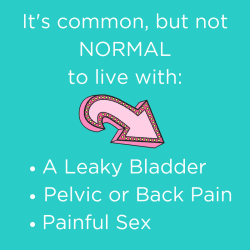Why you should take the time and how to enjoy every minute
The early days after a new baby joins the family are special ones. They also have far-reaching family and societal implications that are beginning to be understood on a global level, with more countries and corporations extending paid leave to both partners. While the United States has a lot of catching up to do, we are seeing more partners taking advantage of parental leave benefits each year. If your family is planning on welcoming a new baby into your family in the near-ish future it will pay to take a look at what your options are and become a part of this important time in history.
It will also pay to plan ahead and think through how you want to spend your time and what you can do to maximize the experience for your new parental role, for your partner, and for your family. To help you get started we have created a guide outlining navigating parental leave professionally and with your family.
Benefits of taking parental leave
The first thing to get really clear on is why a partner may want to consider taking leave if they are not the parent who needs time to physically recover from giving birth. Recent and ongoing research has revealed crucial benefits that parental leave has for the entire family as well as a partner’s career. Here is a quick review of five of the primary findings being examined:
- Parental leave strengthens the bond that the baby has with both parents.
New York Times writer Nathanial Popper said of his experience taking parental leave with his second child: “Long after I returned to the office, I noticed little differences in the way I related to my second son that seemed most easily explained by the extra time I’d spent with him. To this day he regularly calls out for me in the night in a way that my first son rarely did. And when I am with him, I feel a certain intangible sense of ease that has only come more recently with my older son. This feeling of ease, along with my growing comfort with wrangling both kids at once, have had predictably positive effects on my wife, reducing her stress levels, and making us both happier.” - It strengthens the relationship between the parents.
Studies in the past few years have found a correlation between both partners taking parental leave and higher relationship satisfaction and lower instances of divorce. - It makes you a more dedicated employee.
Multiple national and international studies are available that support a professional argument for taking parental leave. Such studies make the case that paid parental leave ultimately leads to higher work satisfaction, lower employee turnover, and that productivity is not affected. - Better long-term cognitive and mental health outcomes for the child.
There is evidence that having both parents closeby in the early days of one’s life leads to higher levels of productivity later in life, better performance at school, and decreased mental health issues. - A happier mom.
The positive impact that both parents taking leave has on a mother’s chances of developing postpartum depression is often overlooked, particularly in the United States. The truth is, however, that having extra support and company from her partner in the early days after birth has profound impacts.
What are my rights?
If you understand the benefits and have decided to take parental leave, the next step is determining what you are legally entitled to and what other options you also have. Currently, 60% of working parents are entitled to unpaid parental leave under FMLA. This law provides for 12 weeks of leave for both parents while their position is protected, though unpaid. As you may see, it’s not the most ideal option for parents, as wages could be sacrificed and you may not be eligible. Companies with fewer than 50 employees, for instance, are not required to offer any leave at all to either parent.
Companies are becoming more progressive with each passing year and you may be one of the growing number of U.S. employees who belong to organizations that offer paid leave for working parents. After determining your company’s benefits and your FMLA eligibility, you can also explore your ability to use vacation time as a part of your parental leave.
The bottom line: it is important that you initiate discussions with your HR representative about what options and combination of options, you will have to choose from and to discuss with your partner. We will discuss the best ways to go about this below.
Professional best practices for partners wanting to take parental leave
- When to tell your manager: Experts suggest that you wait to tell your manager until the end of the first trimester of your partner’s pregnancy.
- Look at all of your options before making a plan with your partner. Don’t assume that you will automatically get 12 weeks under FMLA. Schedule meaningful time to discuss multiple options with your HR department, including looking at options for paid time off. Once you know what you have to work with, you can begin making a plan to suit your family’s needs.
- Plan, plan, and plan some more. Begin planning early on for how your team will operate with you absent. If you will need to train someone, begin the process early and schedule regular time to go over procedures. Take it upon yourself to type up helpful contact sheets, protocols, workflows, and anything else that may help your team. If you are nervous about taking your leave, this will help to calm your own nerves by showing your dedication to your job and co-workers.
- Early on, seek out other working parents in your organization who have taken leave after their partners gave birth. Ask detailed questions about what worked for them and what didn’t, and use what you learn to make your leave a positive experience for you and your team.
- When you do return to work, be as upfront as possible about your schedule and then act as predictably as possible. Don’t leave your team guessing about when you are going to show up and keep your word about what you commit to. If you need to make adjustments, do so ahead of time.
Making the most of your parental leave
So, what is parental leave all about, and how can you make the most of this precious time with your family? While bonding with baby is a large part of being home, there are things that you can do to maximize your time, best support your recovering partner, and make it the best experience possible for everyone. Here are some of our top tips:
- Help out!
While it may seem obvious, this is an opportunity to lighten the load while your partner recovers from giving birth. Help make things easier while she adjusts and you make a big difference in these early days. Look for anything that could use an extra set of hands and do it! - Spend time with the other children.
If there are other children in your family, both parents taking leave can be especially useful in ensuring that the other children are loved up, occupied, and integrated. - Get into some healthy habits.
Don’t forget: your children need the best version of you. Things have changed dramatically for your life and it is a good time to think about the healthy habits you want to maintain or establish. Things like fitting in daily exercise or getting to bed at a healthy hour are wonderful habits for making sure that your children have healthy, happy parents. - Learn how to take some me-time.
Both parents should make sure that they make agreements about when and how personal time will be taken. This is a vital aspect of self-care for parents and should be taken seriously for both and by both. - If you are helping to bridge the gap before your infant begins childcare, do multiple trial runs before returning to work.
Ease into your childcare schedule in the weeks before both parents are back to work full-time. If you are using a nanny, have his or her shifts begin a couple of weeks before returning to work, even if they just come to stay with your baby for a few hours at a time. If you are using a daycare, work out a trial schedule with the staff so that the transition is a happy one for everyone.
For further reading:
The Early Days of New Parenthood
An Open Letter to the Guy About to Go On Paternity Leave


